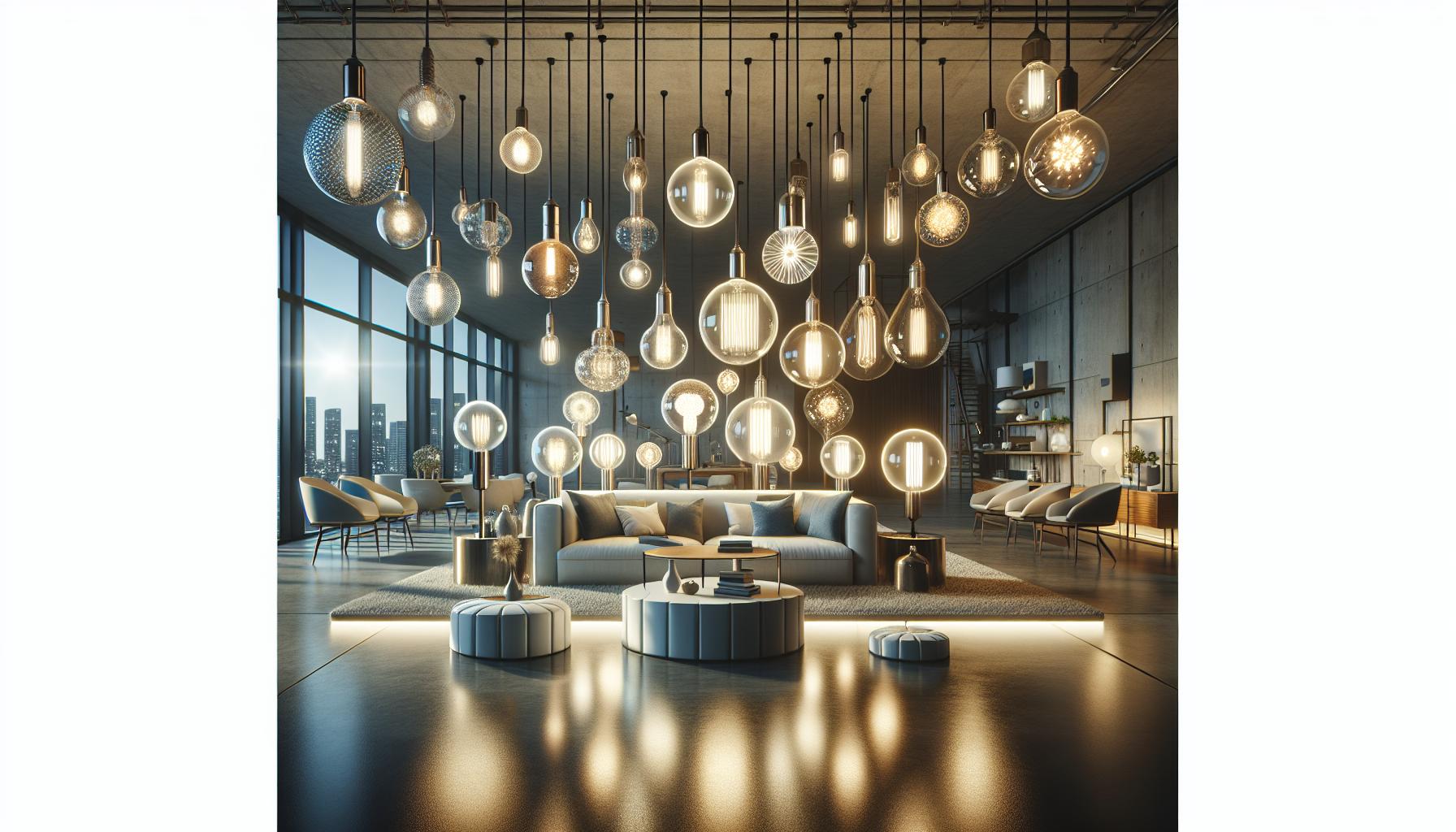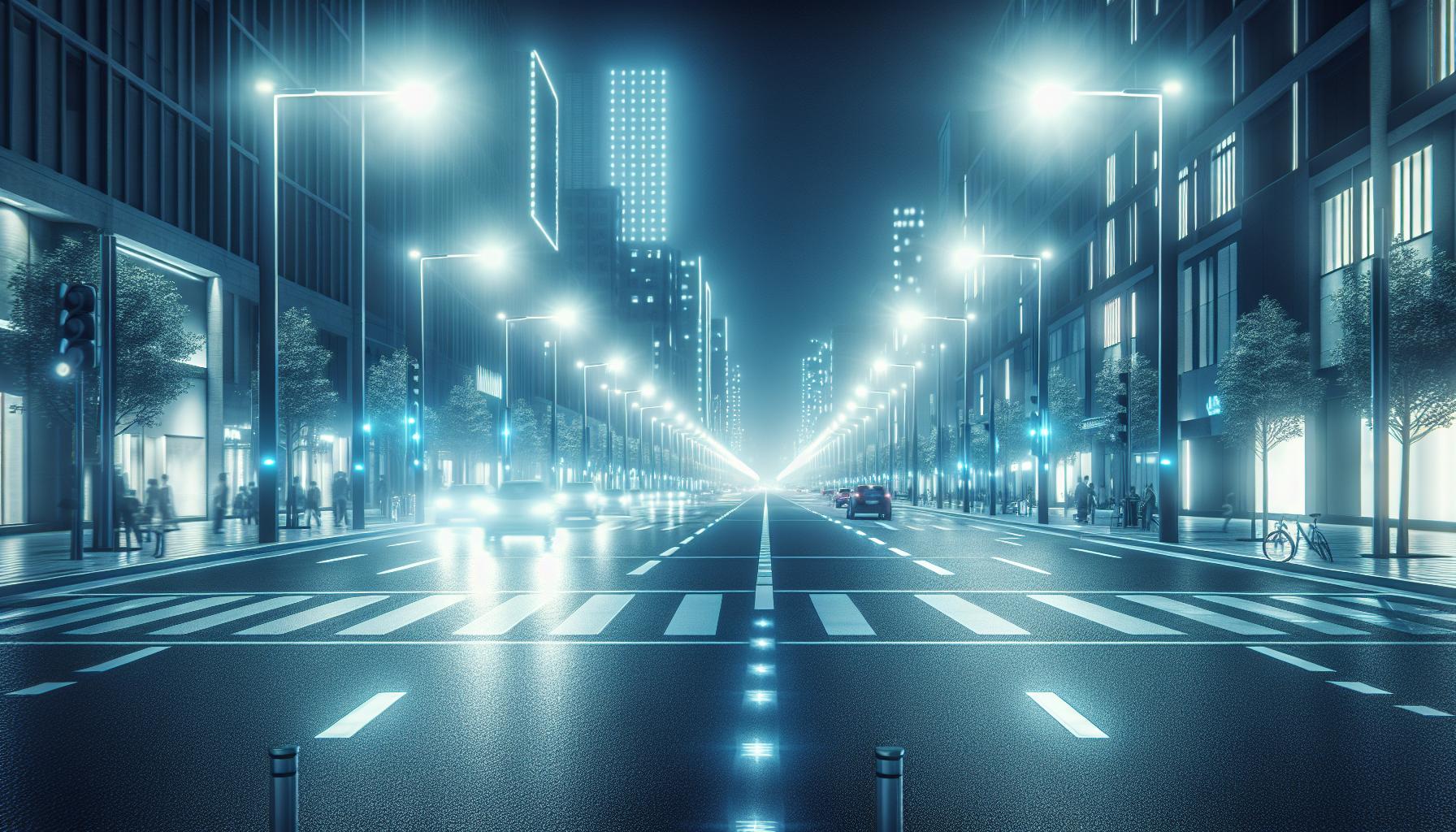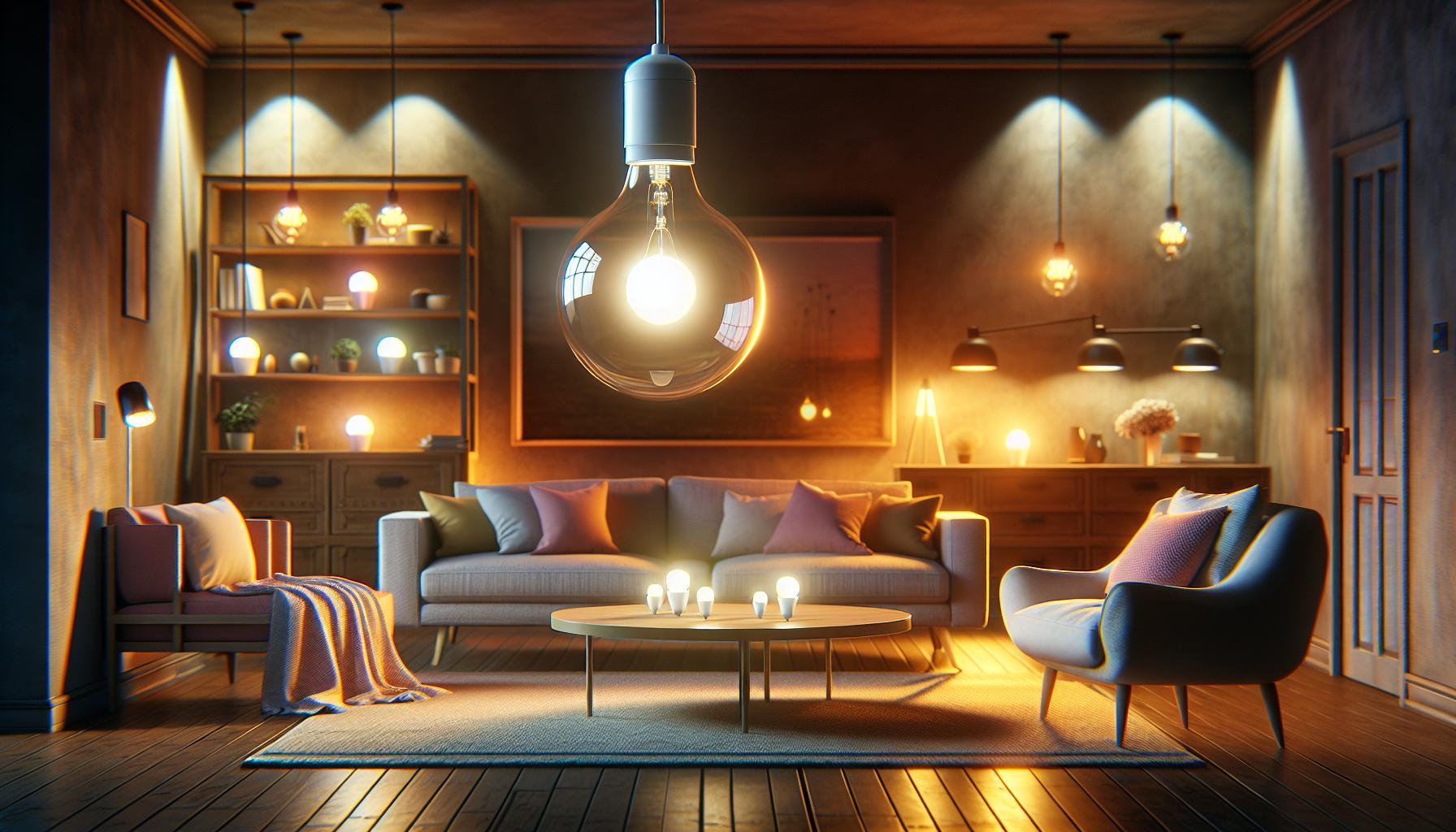Imagine your life without the warm glow of a light bulb—it’s not just dark, it’s unthinkable! Light bulbs have revolutionized the way you live, work, and play, turning night into day at the flick of a switch.
From the moment Thomas Edison perfected the incandescent bulb, light bulbs have been illuminating your homes, streets, and cities. They’re not just a convenience; they’re a cornerstone of modern society.
They’ve become so integral to your daily life that it’s easy to overlook their importance. But think about it—without light bulbs, your late-night reads, safe drives home, and even your Instagram-worthy dinners would be impossible. Let’s shine a light on why these everyday wonders truly matter.
The Invention of the Light Bulb
Imagine life before the light bulb—a time when nightfall dictated the end of productivity and the onset of darkness curtailed evening activities. That all changed with the invention of the light bulb, an innovation that utterly transformed the world.
In 1879, Thomas Edison famously developed the first commercially viable incandescent light bulb. What you might not know is that Edison’s light bulb was not the first of its kind, yet, it was his improvements that made it practical for everyday use. The crux of Edison’s design was a high-resistance filament that lasted longer than any of its predecessors. In reality, Edison’s creation was part of a longer timeline of discoveries, refined by multiple inventors.
The incandescent bulb began with a simple mechanism: electric current passing through a filament, heating it to the point that it produced light. While it sounds straightforward, the journey to find a budget-friendly, durable filament material was arduous. The success of Edison’s bulb was due in part to the use of carbonized bamboo filaments, which were not only effective but also longer-lasting.
Whether it’s creating an inviting ambiance in your living room or focusing on a DIY home project well into the night, the light bulb has an integral role in your life. It’s fascinating to think that the bulbs that now illuminate everything from your bedside table to the tallest skyscrapers started with that single historical breakthrough. Just as DIY fans love to tweak and iterate their projects for the best results, the incandescent bulb itself was a product of continuous innovation and improvement.
Even though incandescent light bulbs have paved the way, the lighting industry has evolved tremendously. Entrepreneurs and inventors have followed in Edison’s footsteps, striving to enhance the efficiency, lifespan, and environmental impact of light bulbs. Advances like the compact fluorescent lamp (CFL) and the light-emitting diode (LED) represent milestones in this ongoing journey of lighting innovation.
Beyond providing light, modern bulbs contribute to energy savings and a reduction in household expenses. The evolution of light bulb technology is not just a story about a brighter future; it’s a testament to the human spirit’s relentless quest for improvement, mirroring the passion you put into your personal DIY endeavors.
The Impact of Light Bulbs on Society
Imagine life without light bulbs. You’d be knee-deep in candle wax with a matchbook at the ready. Since their inception, light bulbs have been pivotal in driving societal progress. They’ve extended the day, paving the way for innovations and modern conveniences that you now can’t live without.
Indoor lighting revolutionized the way homes are designed and how you live within them. No longer constrained to daylight hours, you have the freedom to read, cook, and even tackle your favorite DIY projects well into the night. It’s not just about seeing clearly; it’s about the quality of life they bring right into your living space.
On a grander scale, light bulbs facilitated the 24-hour economy which literally never sleeps. Shift work and night operations are possible in factories, hospitals, and emergency services because of artificial light. Economic productivity took unprecedented strides thanks, in part, to the humble light bulb’s glow.
- Enhances learning and literacy by permitting reading after dark
- Boosts public safety with street lighting
- Expands retail hours, increasing shopping and entertainment options
- Stimulates social and cultural activities during evening hours
The bulb’s reach extends beyond functionality; it’s had a profound impact on art and culture. Theaters, galleries, and venues rely heavily on lighting to create ambiance and effects that captivate audiences. Furthermore, holiday lights and decorative lighting aren’t just festive but have become a part of your cultural identity, sweeping across cities and neighborhoods, uplifting spirits.
« Can Light Bulbs Darken Skin? Busting Myths on Light and Tanning
Why Is My Light Bulb Not Turning On? Fix It With These Simple Steps »
In the realm of health, well-lit environments have been shown to improve mood and boost productivity. Natural light is best, but modern LED lighting has been designed to mimic sunlight, contributing to Circadian rhythm regulation and overall wellbeing.
Progress in lighting technology not only brightens your surroundings but continues to address vital issues of Energy Conservation and environmental impact. With every flip of a switch, you’re not just dispelling darkness; you’re participating in a legacy of innovation that’s illuminating new possibilities for the future.
Lighting Up Your Home
Imagine your home without light bulbs. It’s not just about illumination—it’s about creating an atmosphere where you feel comfortable and can enjoy the coziness of your living spaces. Your home’s lighting is a silent backdrop that has the power to transform any room into a vibrant part of your life.
Functionality meets design in modern home lighting. From smart bulbs that change colors to dimmable options creating the perfect ambiance, the choices are endless. For all you DIY enthusiasts out there, updating your home with various lighting fixtures is a project that not only enhances your space but can also increase your property’s value.
Consider the following as you plan your next home lighting project:
- Layering your lights is essential. Use a mix of ambient, task, and accent lighting to achieve the best results.
- Energy-efficient bulbs, like LEDs, save on electricity bills and last longer, reducing the hassle of frequent replacements.
- Color temperature is critical – warm lights for a cozy vibe or cool whites for a more alert and productive environment.
Lighting is often overlooked in the hustle and bustle of home design. Yet it’s one of the most impactful aspects. Think about the last time you walked into a room with perfect lighting. Didn’t it just feel right? That’s the magic you’re after.
When you consider the layout of your home, every room has its own character and purpose. Whether you’re cooking in the kitchen, relaxing in the living room, or working in your home office, the right lighting setup can greatly improve your experience.
In your kitchen, under cabinet lighting isn’t just chic; it’s practical. In your living room, floor lamps add depth and warmth, perfect for unwinding after a long day. And in your home office? A well-placed desk lamp can reduce eye strain and keep you focused.
Remember, it’s not just about the bulbs themselves – the fixtures you choose play a significant role too. Between sleek modern designs to more traditional looks, the options allow you to express your style through light.
Your choices in home lighting mean more than utility; they show off your personality. Whether you opt for energy-saving LEDs or love the industrial look of Edison bulbs, how you light up your home is a form of self-expression.
Light Bulbs and Safety on the Roads
Ever turned a dark corner and sighed in relief as streetlights flooded your path with light? That’s the silent vigil of light bulbs ensuring your safety on the roads. Street lighting is pivotal in maintaining visibility for drivers, pedestrians, and cyclists alike, and plays a crucial role in traffic accident prevention.
You’re likely familiar with the sense of security that comes from well-lit neighborhoods and highways. It’s not just about comfort; it’s about reducing risks. Research shows that the presence of adequate road lighting can decrease accidents by significant percentages. Let’s breakdown some vital stats:
| Improvement Factor | Percentage Decrease in Accidents |
|---|---|
| Overall nighttime visibility | Up to 30% |
| Pedestrian accidents at crossings | Approximately 40% |
| Vehicle collisions at poorly-lit areas | Around 20% |
These numbers don’t just reflect statistics; they represent real lives saved, and that’s where proper lighting steps in as a hero of the night.
Think about the technology advancements in light bulbs over recent years. LED streetlights, for instance, ascend beyond traditional lighting by offering brighter, more reliable, and energy-efficient solutions. Their longevity means fewer outages, ensuring that the roads stay lit, and consequently, safer, for longer durations.
Beyond common streetlights, traffic signals rely heavily on the clarity and brightness of bulbs to direct traffic flow. Your prompt response to these signals can make the difference between a regular commute and an unfortunate event. High-quality bulbs in these signals are non-negotiable—they must endure sun, rain, wind, and varying temperatures without faltering.
In your own vehicle, the headlight bulbs are your first defense against unexpected road conditions. Upgrading to advanced bulbs can boost your visibility significantly, allowing you a better reaction time to potential hazards.
So, the next time you maneuver easily down a well-lit street, remember the silent guardians above you that contribute to your journey not just being smooth, but safe as well. When you consider upgrading your home lighting for ambiance or energy efficiency, don’t disregard the importance of these luminary sentinels that guide and protect us on the roads every night.
Light Bulbs and Creating the Perfect Ambience
Whether you’re curling up with a good book or throwing a lively dinner party, your light bulbs play a key role in setting the mood. Understand the Color Temperature–bulbs with a warmer color temperature create a cozy and relaxing atmosphere, perfect for living rooms and bedrooms, while cooler temperatures are better suited for task lighting in places like the kitchen or office.
Dimmable lights adjust with your changing needs. Imagine dimming the lights for a romantic dinner or brightening your workspace on a cloudy day. These subtle changes can enhance your mood and energy levels, keeping you comfortable no matter the occasion.
Have you ever considered the shape and size of your light bulbs? They don’t just affect how light is distributed in a room; they also contribute to its overall design aesthetic. A large, globe-shaped bulb hanging above your dining table becomes a focal point, while a series of small, discreet bulbs can create a well-lit yet unobtrusive background.
When it comes to DIY projects, why not go for a custom lighting solution? You could string together Edison bulbs for a vintage look or install recessed LED strip lighting for something more modern. Plus, these projects not only personalize your space but can also increase your home’s value.
- Smart bulbs take your lighting game to the next level. These high-tech options can:
This innovative technology allows you to transform your environment with just a few taps on your phone. Whether it’s simulating a sunrise to wake you up or synchronizing lights to your favorite music, smart bulbs help you tailor your surroundings to your lifestyle.
Remember, great lighting isn’t just functional; it’s an art form. With the right light bulbs, you’re not just lighting a room; you’re setting the stage for life’s moments.
Conclusion
You’ve seen how light bulbs do more than just brighten a room—they shape the way you feel and interact with your space. Whether you’re setting the mood, tackling a project, or personalizing your home, the right lighting makes all the difference. With smart bulbs, you’re not just illuminating your surroundings; you’re embracing an innovative lifestyle that syncs with your tech-savvy world. Remember, lighting isn’t just practical—it’s an essential element that transforms your environment and reflects your unique style. So go ahead, flip that switch and let there be light that’s as dynamic and vibrant as you are.
Frequently Asked Questions
What role do light bulbs play in creating ambience?
Light bulbs are crucial for setting the mood in any space, as they can influence both ambiance and energy levels. Color temperature and dimmable features can enhance or soften the atmosphere based on the setting or occasion.
How does color temperature affect mood?
Color temperature affects the perceived warmth or coolness of the light. Warmer lights tend to create a cozy and inviting atmosphere, which is ideal for relaxing, while cooler lights are energizing and better for concentration.
What should be considered about the shape and size of light bulbs?
When choosing light bulbs, it’s important to consider both function and design. The shape and size impact the distribution of light and how it complements the room’s aesthetic.
How can DIY projects enhance home lighting?
DIY projects allow for customization of lighting, enabling homeowners to tailor the light to their specific needs and personal style, often resulting in increased home value.
What are the benefits of smart bulbs?
Smart bulbs offer high-tech features, such as the ability to change colors, connect with smart home devices, and be controlled via a smartphone, adding convenience and versatility to home lighting systems.
Is great lighting more about functionality or art?
Great lighting is a balance between functionality and art, serving to illuminate spaces effectively while also contributing to the overall design and experience of an environment.





